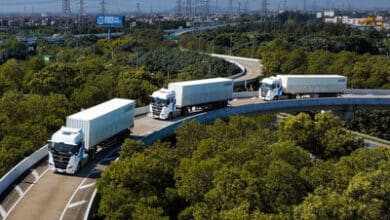In an exciting development for urban mobility, TIER IV has recently completed pilot tests for its innovative robotaxi service in Tokyo. This marks a significant stride toward the commercialization and integration of autonomous taxis into the city’s bustling transport network. Let’s delve deeper into the outcomes of these tests and what they signify for the future of automated travel in urban landscapes.
Overview of TIER IV’s Robotaxi Pilot Tests
The pilot tests were centered in two high-traffic areas of Tokyo: Odaiba in November 2024 and Nishi-Shinjuku in December 2024. Using JPN TAXI vehicles equipped with TIER IV’s autonomous driving system, these tests involved maneuvering through about 500 complex driving scenarios including navigating turns and avoiding obstacles. A safety mechanism allowed for a switch to manual control when necessary, ensuring passenger safety throughout the testing phase.
Key Findings from Tokyo’s Robotaxi Trials
The trials revealed significant insights into the operational capabilities and challenges of the robotaxis. Vehicles efficiently handled dense urban environments by adapting to various traffic conditions. Passengers in Odaiba could set their destinations via voice commands, whereas in Nishi-Shinjuku, a ride-hailing app facilitated the selection of predetermined routes. The feedback collected from passengers post-ride highlighted areas for enhancement, predominantly in service quality and user interface.
The Future Outlook for TIER IV Robotaxis
Moving forward, TIER IV plans to harness these insights to refine their reference design for robotaxis, which will be shared with major players in the automotive industry. By reducing the entry barriers to developing robotaxi-ready vehicles, TIER IV aims to facilitate a quicker launch of robotaxi operations by 2027. This not only promises to revolutionize urban mobility but also ensures scalability and faster adoption across different regions.
In summary, TIER IV’s pilot tests in Tokyo have successfully demonstrated the feasibility and reliability of robotaxis in urban settings. With a strong focus on safety and user experience, these advancements are set to reshape how we think about transportation in densely populated cities. As we look ahead, the potential for a widescale rollout of robotaxis seems not just plausible but imminent, propelling us towards a more automated and efficient urban future.
Don’t miss our latest Startup News: Infomedia Supercharges Portfolio with Intellegam Buy



